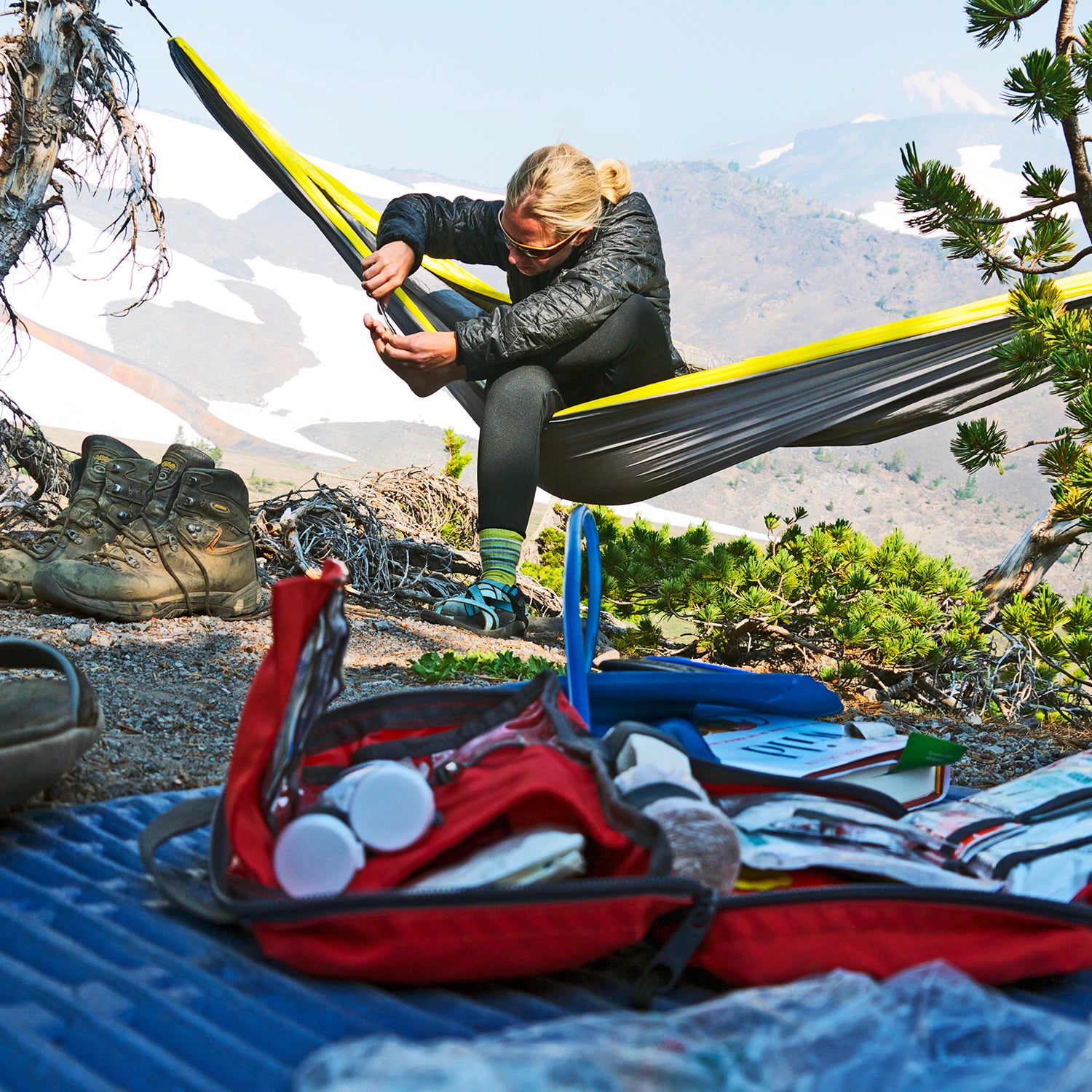Sure, giving a tampon to a fellow camper in need will earn you major kudos in the area of personal preparedness (if you’re a dude, you get extra points). But in some wilderness or survival situations, a well-deployed tampon can be a lifesaving hack.
Search for “tampon survival hacks” on the internet and you’re bound to discover a whole slew of creative and somewhat outlandish uses for this little cotton pellet. Not all of them are practical. “There’s a lot of creative arts and crafts going on,” says Dan Baird, a primitive-survival expert and backcountry guide at the California Survival School. “Are you going to carry a tampon because it can do all those things? Or are you going to make smarter decisions about understanding priorities and preparation?” But according to Baird and three other survival experts, there are several scenarios where tampons can become a crucial tool.
For those who aren’t familiar with its anatomy, a tampon consists of a bullet-shaped cluster of tightly packed cotton fibers encased in a thin sheath of rayon, with a string woven down the center. It’s sometimes housed in a plastic or cardboard applicator. Important to note: tampons are not packaged and sealed as sterile items.
Medical Emergencies
A tampon’s entire purpose is to absorb, and if taken apart it can be utilized for first aid. Cat Bigney, head instructor at Boulder Outdoor Survival School, uses tampons to stem nosebleeds. “This is useful in the desert or whenever you change into a drier environment,” she says. Tampons also make great wound dressings. “Sometimes with a bleeding wound, you’re applying direct pressure, and the blood is soaking through but you don’t want to remove that first dressing. Tampons absorb a lot for what they are,” says Cody Lundin, founder of the Aboriginal Living Skills School. “A lot of backcountry emergency personnel like them because they stop blood flow in injuries.”
Michael Douglas, a Registered Maine Guide and instructor at the Maine Primitive Skills School, also uses tampons as a medium for applying a medicinal soak to the skin—for example, applying tannin-heavy black tea to a wound. (Tannins are known to aid in wound healing and prevent infection.) The saturated tampon can act as a poultice or wound dressing. “It will keep the skin cool,” he says. “It’ll immediately eliminate itching or discomfort and will prevent you from breaking out in a rash.”
Tampons also apparently work great for treating blisters caused by poison ivy, poison oak, and sumac. “People don’t realize that most of the time you get poison ivy, it tends to be the most uncomfortable in your armpits and the webbing in between your fingers and toes,” Douglas says. Tampons expand and help dry out the rash to prevent weeping and itching.
Starting a Fire
While synthetic fabrics won’t hold a flame (rayon will burn slowly and melt), cotton catches sparks and works well as a fire accelerant. “You can just fluff it up, and it’s great as a fire tinder to catch an ember,” says Bigney.
Lundin uses a cotton ball soaked in petroleum jelly to start fires (the jelly yields burn times of up to six minutes, as opposed to 20 seconds for the cotton alone). But he says the same method would work just as well with a 100 percent cotton tampon coated in lip balm. “That’s a real, no-bullshit hack,” says Bigney. You can also use the tampon applicator to breathe life into a fire, instead of using your fingers or fists. “It will funnel air into the spot where you need to get your fire going.”
Bigney and Lundin both also brought up using a tampon as a source of lighting that Lundin calls a fat lamp. You’ll need a container, like a shell or a tuna can, and any sort of fat-based product. Put the fat into the container, and then add your tampon. “Once saturated, the cotton acts as a wick and the fat acts like the candle wax,” says Ludin.
Wilderness Survival
There are several uses for tampons beyond wound care and starting a fire. You can save the applicator to use as a straw, which can be important when your only water source is too tiny to accommodate a whole water bottle. “In the desert, oftentimes it’s hard to get water because it’s in such small places,” says Bigney.
Most important, hanging a tampon from a tree branch can be a great way to mark a spot on a trail. “It’s just at eye level, it’s white, it reflects the most light spectrum, and so it’s easy to see in the backcountry,” says Lundin.
Bigney, on the other hand, suggests using the brightly colored wrapper. “We normally just see that as wasteful trash,” she says. “But if you think about it, when you’re hiking along trails, oftentimes you see trail markers, like little flashes tied to branches.” If you’ll need to find your way back to the car and feel nervous about getting lost, tie the wrapper to a tree. “I would one million percent do it if that’s what I had,” she says. Just make sure to collect the wrappers on the way home, so as not to litter.

